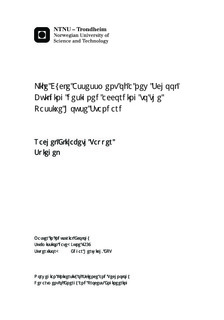Life Cycle Assessment of a new School Building designed according to the Passive House Standard
Master thesis
Permanent lenke
http://hdl.handle.net/11250/235709Utgivelsesdato
2014Metadata
Vis full innførselSamlinger
Sammendrag
Two life cycle assessments are conducted for the comparison of the construction and use of a school built after the Norwegian building code, TEK10, and a passive school built after the Norwegian Standard NS 3701.Data from Environmental Product Declarations (EPDs) and ecoinvent is used. The NORDEL electricity mix is used for Norwegian production and electricity consumption. SimaPro 8.0 is used to process the data, and the ReCiPe method, hierarchist midpoint version 1.06 is used for the impact assessment. The largest environmental impacts from the production of building materials is from concrete, insulation, and cladding. Com- paring the LCA results of the passive house school to the same school built to standard reveals a 16% reduction in climate change impacts. The environmental impacts associated with the use phase are lower for the passive school relative to the standard school.The total life cycle climate change impacts per m2 useful floor area is 1.2 tons CO2 eq for the passive school and 1.46 tons CO2 eq for the TEK10 school. The delivered energy for electricity and heating for the passive school was estimated to be 44 kWh/m2, and the cumulative energy consumption for the passive house is 27 GJ eq per m2, and is 9% lower than the energy demand of the TEK10 school over the same lifetime. Share of impacts from construction, waste, and maintenance were significant including 32% of climate change emissions, 55% of terrestrial acidification and 46% of particulate matter formation.The overall conclusion is that it is environmentally beneficial to build and operate a passive school compared to a school following the TEK10 building standard.
